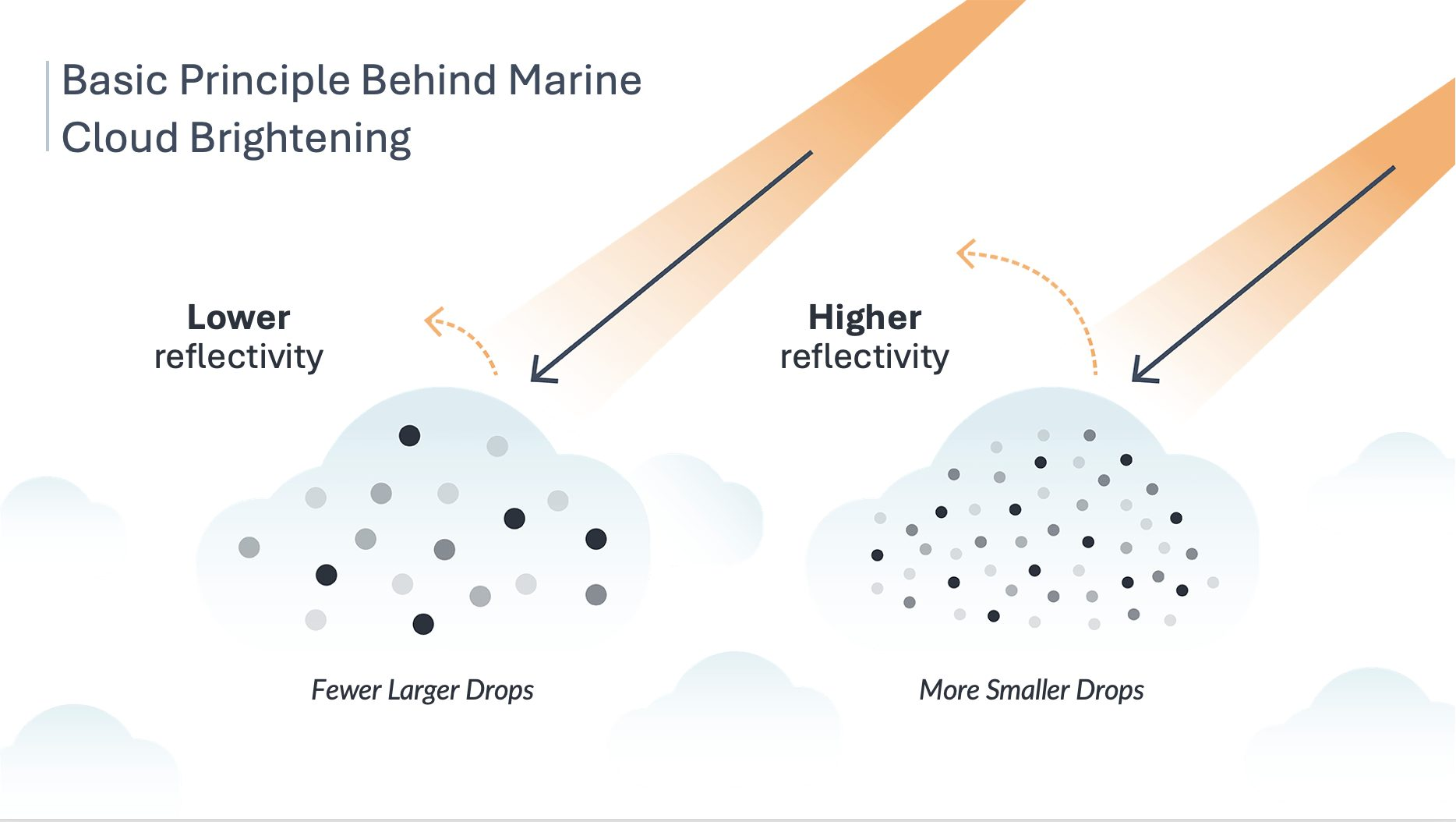Q. What is Marine Cloud Brightening? Discuss its potential benefits and risks in the context of mitigating climate change. (250 words)
20 May, 2024 GS Paper 1 GeographyApproach
- Introduce by defining Marine Cloud Brightening
- Delve into potential benefits of MCB
- Highlight significant risks associated with it
- Conclude positively.
Introduction
Marine Cloud Brightening (MCB) is a proposed geoengineering technique that aims to mitigate the effects of climate change by increasing the reflectivity of low-level marine clouds, thereby reflecting more incoming sunlight back into space and reducing the amount of solar radiation absorbed by the Earth's surface.
- The process involves spraying a fine mist of seawater particles into the atmosphere, which act as cloud condensation nuclei and promote the formation of brighter, more reflective clouds.
- These clouds have a higher albedo (reflectivity) and can reflect more incoming sunlight, potentially cooling the Earth's surface.
Body
Potential Benefits:
- Cooling Effect: MCB has the potential to reduce global temperatures by reflecting more sunlight back into space, potentially mitigating the effects of climate change caused by greenhouse gas emissions.
- MCB could lessen extreme ocean heat, potentially safeguarding marine ecosystems like coral reefs facing bleaching threats.
- Buying Time for Emissions Cuts: MCB could provide a buffer while we transition to cleaner energy sources.
- This buying time could allow for deeper cuts in emissions and avoid reaching catastrophic tipping points, like the irreversible melting of polar ice caps.
- Localized Impact: Unlike other geoengineering techniques that aim to achieve global cooling, MCB can be targeted to specific regions, allowing for more localized climate interventions.
- For example, MCB could be deployed in areas particularly vulnerable to rising sea levels or extreme heat events.
- Reversibility: The effects of MCB are relatively short-lived, and if stopped, the Earth's climate would return to its previous state within a few years, making it a potentially reversible technique.
- Cost-effectiveness: Compared to other geoengineering techniques, MCB is considered relatively inexpensive and technologically feasible.
Potential Risks:
- Unintended Consequences: Like any large-scale intervention in the Earth's climate system, MCB carries the risk of unintended consequences that are difficult to predict, such as changes in precipitation patterns, ocean circulation, and ecosystem disruptions.
- Limited Scope: MCB might not be effective in all regions. Cloud types and atmospheric conditions can significantly impact its effectiveness.
- Deploying MCB in the tropics, where clouds are already quite reflective, would likely have minimal impact on global warming.
- Spatial Variability: The cooling effects of MCB may not be evenly distributed, leading to regional disparities and potential conflicts over resource allocation and deployment.
- Moral Hazard: The perceived effectiveness of MCB could potentially reduce the urgency to address the root causes of climate change, such as reducing greenhouse gas emissions.
- International Governance: Deploying MCB unilaterally could trigger international disputes. Effective international agreements would be necessary for responsible implementation.
Conclusion
While MCB holds promise as a potential climate change mitigation strategy, its deployment on a large scale would require careful consideration of the risks, as well as robust governance frameworks and international cooperation to ensure responsible implementation and monitoring.
